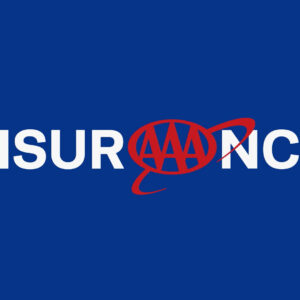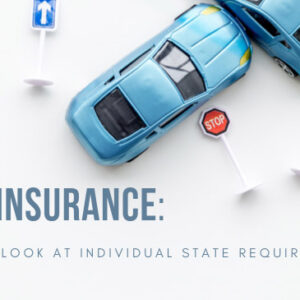Introduction
Becoming a confident, responsible driver hinges not only on mastering the basics of operating a vehicle but also on understanding—and leveraging—the safety technologies designed to protect you on the road. In 2025, advanced safety features are no longer the exclusive domain of luxury models; many are standard or widely available even on entry-level cars. For new drivers—who statistically face higher crash risks—the right combination of technology and skill can make all the difference.
1. Automatic Emergency Braking (AEB)
Automatic Emergency Braking monitors the road ahead and automatically applies the brakes if it detects an imminent collision and the driver fails to react in time. Studies by the Insurance Institute for Highway Safety (IIHS) show that AEB systems can reduce rear-end crashes by up to 50% and pedestrian crashes by 40%(IIHS). In fact, the U.S. regulation passed in early 2024 now requires all new vehicles to include AEB within five years, ensuring broad deployment by 2030(AP News).
Key Benefits:
- Crash Reduction: Dramatically lowers the likelihood of severe front-end collisions.
- Pedestrian Safety: Some systems detect and brake for pedestrians and cyclists.
- Insurance Savings: Many insurers offer discounts for AEB–equipped vehicles.
2. Lane Keeping Assist (LKA) & Lane Departure Warning (LDW)
While closely related, Lane Departure Warning alerts you when your vehicle drifts out of its lane, and Lane Keeping Assist actively steers the car back toward the center of the lane if you don’t intervene. Together, they help prevent unintentional lane departures that can lead to sideswipe or head-on collisions.
- LDW uses cameras to detect lane markings and issues visual, auditory, or haptic alerts.
- LKA applies gentle steering torque to guide you back on course.
IIHS testing has shown these combined systems reduce single-vehicle, sideswipe, and head-on crashes by about 10% to 20% when used properly(IIHS).
3. Blind-Spot Monitoring (BSM)
Blind-Spot Monitoring employs radar or ultrasonic sensors to watch areas alongside and just behind your car—zones that your mirrors can’t cover. When another vehicle enters your blind spot, a dashboard or side-mirror warning light illuminates; some systems also vibrate the steering wheel or seat.
Why It Matters for New Drivers: Merging and changing lanes can be stressful. BSM provides real-time alerts so you can make safer decisions.
4. Adaptive Cruise Control (ACC)
Traditional cruise control maintains a set speed; Adaptive Cruise Control goes further by automatically adjusting your speed to maintain a safe following distance from the car ahead. More advanced versions integrate lane-centering to create a hands-on-wheel semi-autonomous experience on highways.
- Basic ACC: Brakes or accelerates to keep a preset gap.
- “Pilot Assist” & Beyond: Adds lane-centering and slow-traffic jam support (e.g., Mercedes-Benz Pilot Assist)(IGOTA~STi).
5. Electronic Stability Control (ESC)
Electronic Stability Control detects and reduces skidding or loss of traction. If the system senses understeer or oversteer, it automatically applies individual brakes and/or reduces engine power to help the driver maintain control.
- Mandated Since 2012: Required on all new cars in the U.S., ESC has prevented an estimated 392,000 crashes(IIHS).
6. Tire Pressure Monitoring System (TPMS)
Proper tire inflation is critical for handling, braking, and fuel efficiency. TPMS continuously checks tire pressures and alerts you if any tire dips below the safe threshold.
- Indirect vs. Direct TPMS: Direct systems use pressure sensors in each wheel; indirect systems infer pressure loss by monitoring wheel speed variations.
7. Rear Cross-Traffic Alert (RCTA)
Backing out of driveways or parking spots can hide oncoming traffic. Rear Cross-Traffic Alert uses radar to detect vehicles approaching from the sides and warns you—often with both audible and visual cues—so you can avoid collisions.
8. Pedestrian and Cyclist Detection
An extension of front-facing AEB, these systems recognize pedestrians and, increasingly, cyclists in or near the roadway. If a potential collision is detected and you don’t react, the system will brake automatically.
- City Safety Technology (Volvo) and similar systems have demonstrated notable reductions in pedestrian crash rates(IGOTA~STi).
9. Driver Attention Monitoring
Drowsy or distracted driving contributes to a large share of crashes. Driver Monitoring Systems (using cameras focused on your eyes and head position) can detect fatigue or inattention and issue alerts to prompt a break.
10. Automatic High-Beam Control
At night, high beams improve visibility—but they can blind oncoming drivers. Automatic High-Beam systems switch between high and low beams based on detected ambient light and oncoming traffic, ensuring optimal illumination without manual toggling.
Comparison Table: Feature Availability & Impact
| Feature | Standard on Most 2025 Models? | Cost Impact (Approx.) | Real-World Crash Reduction |
|---|---|---|---|
| Automatic Emergency Braking | Yes (90%+) | +$80 per car | ↓ Rear-end by 50%(IIHS) |
| Lane Keeping Assist | 70% | +$150 | ↓ Lane-departure crashes by 20%(IIHS) |
| Blind-Spot Monitoring | 65% | +$200 | ↓ Lane-change crashes by 14% |
| Adaptive Cruise Control | 55% | +$300 | — |
| Electronic Stability Control | 100% | Included | ↓ Skid-related crashes by 34%(IIHS) |
| Tire Pressure Monitoring System | 100% | Included | — |
| Rear Cross-Traffic Alert | 50% | +$250 | ↓ Back-over collisions by 35% |
| Pedestrian & Cyclist Detection | 40% | +$200 | ↓ Pedestrian crashes by 40% |
| Driver Attention Monitoring | 30% | +$400 | — |
| Automatic High-Beam Control | 60% | +$120 | Improved night safety |
Key Insights & Implications
- Technology Diffusion: What began as premium options a decade ago (e.g., AEB, ACC) are now common even in compact sedans. New drivers can find comprehensive safety suites without breaking the bank.
- Regulatory Momentum: Federal mandates, like the NHTSA’s AEB requirement, push manufacturers to standardize life-saving tech.
- Human–Machine Synergy: While automation reduces crash risk, no system replaces attentive driving. Understanding both capabilities and limitations is crucial.
- Insurance & Resale Value: Cars equipped with advanced safety systems often qualify for lower insurance rates and retain higher resale values.
Conclusion & Next Steps
For new drivers embarking on their journey behind the wheel, familiarizing yourself with these top 10 safety features is not just informative—it could be life-saving. When shopping for your first car, look beyond aesthetics or horsepower; prioritize vehicles that equip you with the technologies above. Take advantage of test drives to experience these features firsthand, and read manufacturer brochures to understand system nuances.
Ready to dive deeper? Compare models at your local dealer, consult the IIHS Top Safety Picks for the latest award-winning vehicles, and check NHTSA crash test results online.
Call to Action: Share this post with a new driver in your life or leave a comment below about which safety feature you value most!
Happy—and safe—driving in 2025!






